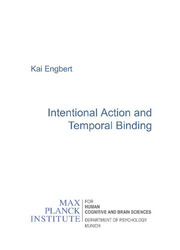| Departments | |
|---|---|
| Book Series (96) |
1378
|
| Nachhaltigkeit |
3
|
| Gesundheitswesen |
1
|
| Humanities |
2362
|
| Medienwissenschaften | 16 |
| Theology | 57 |
| Philosophy | 102 |
| Law | 422 |
| Economics | 850 |
| Social sciences | 416 |
| Sports science | 48 |
| Psychology | 233 |
| Educational science | 190 |
| History | 182 |
| Art | 110 |
| Cultural studies | 165 |
| Literary studies | 116 |
| Linguistics | 88 |
| Natural Sciences |
5406
|
| Engineering |
1790
|
| Common |
97
|
|
Leitlinien Unfallchirurgie
5. Auflage bestellen |
|
Advanced Search
Intentional Action and Temporal Binding (English shop)
Kai Engbert (Author)Preview
Table of Contents, Datei (6.7 KB)
Extract, Datei (94 KB)
In this dissertation, transient magnetoquasistatic field simulations are carried out considering hysteresis effects in ferromagnetic material. Numerical hysteresis models are combined with the Finite Integration Technique applied for the discretization of the model geometry.
Ferromagnetic hysteresis is a phenomenon where the magnetic flux density is not only determined by the instantaneous excitation, but also from the hysteresis history. Hence, the relationship between the magnetic flux density and the magnetic field strength can not be reduced to a time-independent material characteristic. As mathematical models for representing hysteresis, the Preisach model and the Jiles-Atherton model are used. The Preisach model is based on the assumption that any hysteresis can be expressed as a sum of elementary hysteresis loops. The distribution function of the elementary hysteresis is determined from a set of measured first-order transition curves. A two-step interpolation on the measurement data is applied. The Jiles-Atherton model is described by a first-order ordinary differential equation which depends on five parameters of the Jiles-Atherton model. These parameters are determined from the experimental data. Both models can be evaluated for arbitrary input values.
The hysteresis model are combined with the Finite Integration Technique yielding two possible nonlinear magnetoquasistatic formulations: the magnetic polarization update scheme and the magnetic reluctivity nonlinear update scheme. Using the magnetic polarization update scheme, only a magnetization term at the right hand side of the algebraic system of equations has to be updated between two successive nonlinear steps. In the magnetic reluctivity nonlinear update scheme, the reluctivity at the left hand side of the algebraic system of equations has to be updated. For the latter case, the system has to be linearized, which is here based on the Newton-Raphson method or the successive approximation technique, equipped with a relaxation strategy.
Compared with the magnetic polarization update scheme, the magnetic reluctivity nonlinear update scheme linearized by the Newton-Raphson method converges substantivally faster. Its convergence is, however, only guaranteed in the vicinity of the solution. On the other hand, the magnetic polarization update scheme is very robust. In order to combine the advantages of the both update scheme, a new hybrid Newton-Polarization method is introduced within the magnetoqusistatic models. A vector hysteresis model as an extension of the hysteresis models is also with the Finite Integration Technique, in order to numerically simulate hysteresis phenomena in models parts submitted to rotational flux.
The above mentioned algorithms are tested using the TEAM Benchmark Problem 32. The results show a good agreement with the measurements.
| ISBN-13 (Printausgabe) | 3865375073 |
| ISBN-13 (Hard Copy) | 9783865375070 |
| ISBN-13 (eBook) | 9783736915077 |
| Final Book Format | A5 |
| Language | German |
| Page Number | 176 |
| Lamination of Cover | matt |
| Edition | 1 Aufl. |
| Volume | 0 |
| Publication Place | Göttingen |
| Place of Dissertation | München |
| Publication Date | 2005-06-16 |
| General Categorization | Dissertation |
| Departments |
Psychology
|








